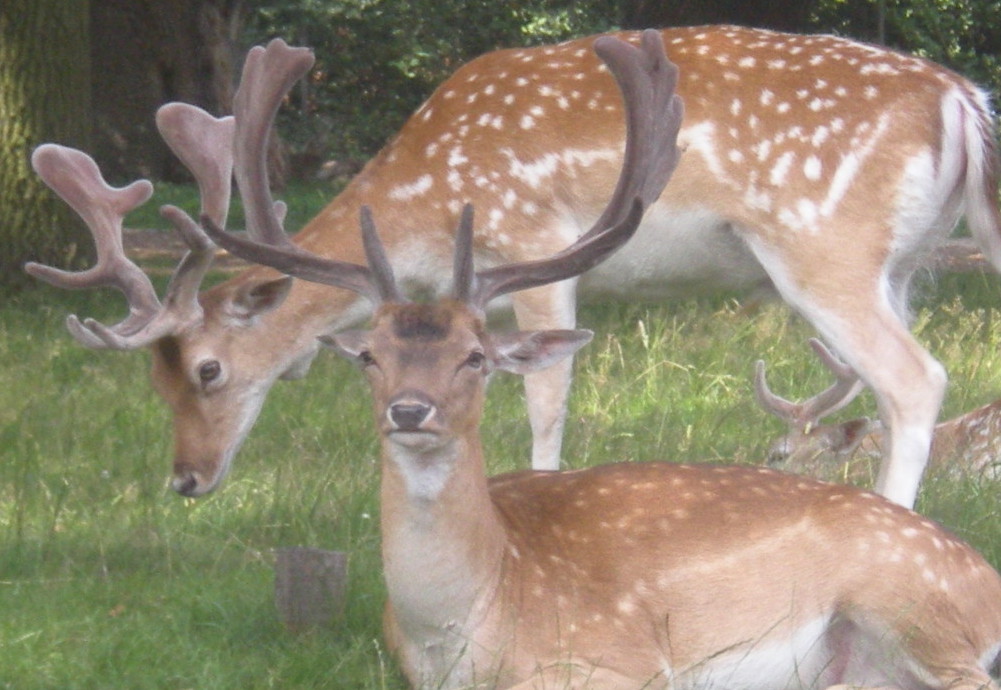Fallow deer

Status
Non-native, common and widespread
Population
100,000
Scientific name
Dama dama
Fallow deer were introduced for hunting by the Normans nearly 1000 years ago and are now widespread throughout the UK. The males have characteristic large, palmate antlers, which are shed between April and June. In summer, their fur is usually reddish-brown, with lighter spots, while in winter it is thicker and greyer, with less distinct spots. They have a relatively long tail with a dark stripe running along it. Fallow deer are social animals and usually live in herds of up to 50, although the groups are generally unisex. The male and female herds come together in autumn to mate. During the rut, males scrape the ground with their antlers to mark their territory and establish their status, and will fight with persistent rivals. Fallow deer can be confused with sika deer because they both have pale spots along their backs, but the antlers of sika are not palmate.
Shoulder height: 85 – 110cm
Weight: 40 – 80kg
Lifespan: Up to 16 years but males rarely live longer than 8 – 10 years in the wild
Reproduction
Fallow deer mate in October and November; females give birth to a single fawn, weighing 4 – 5kg, in June or July. It grows quickly and is mobile from a young age. Within a week, the fawn joins the social group and follows the herd about.
Diet
Mainly grasses, rushes and leaves from trees. Also acorns, berries and beechmast in the autumn and heather, holly and bark of felled conifers in winter.
Habitat
Deciduous woodlands, also marshes and meadows. This is the deer most frequently kept in parks.
Predators
No natural predators in the UK.
Threats
They are culled in some areas to control numbers.
Status & conservation
Non-native, widespread and locally common
Population size & distribution
GB population 100,000 (Scotland, 4,000; Wales, 1,000). The population has remained unchanged over the last 10 years. They are present throughout much of England and parts of Wales and Ireland, and are locally common in Scotland.
Did you know?
Male fallow deer make short, low-pitched groaning noises to challenge other males and to impress the females. When these calls are analysed, it’s been found that each buck has a distinctive voice and an individual pattern of groans.
